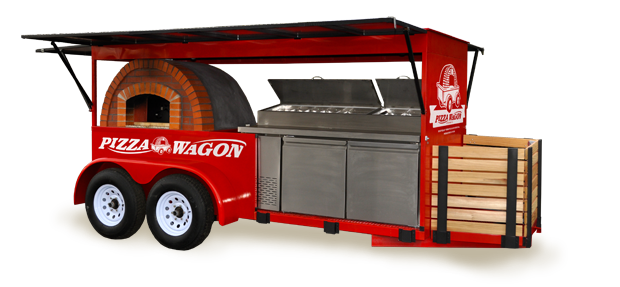Impeccably round, but not a spherical structure, this disk-like item is smooth on its lower surface, the surface which rests atop the table it is presented on. The complete structure is approximately fourteen inches in diameter, with a radius of seven inches and a height of two and a quarter inches. The bottom surface feels gritty to the touch, although it appears completely level to the eye from afar; scant yellow specks adorn the foundation. Upon lifting the object to observe the entire foundation, the object is not rigid and inflexible. Rather, this thing is bendable; when picking up one half, the other half bends towards the ground. When ripping into the crisp exterior layer, the innards are like compacted gossamers. The lowest section of the circular substance is composed of a soft, fluffy, and apparently slathered with a golden substance material. The smooth material appears to have been molded, shaped, and distinctively crafted and created in order to comprehensively encompass its mostly flat but circular shape. When observing that the object is essentially flat, the flat aspect does not refer to the item in its entirety, but rather its inner most ring is the lowest and also the more horizontal segment of this thing. The outer segment is also a ring, this segment effuses from and is composed of the same spongy material which comprises the inner ring, yet this sector puffs up and surpasses the height of the lower material. The outer ring of material has been twisted upward and gathered into a dense, but also supple barricade to enclose the other pieces which constitute this rounded object. Atop the base infrastructure is a deep red, pureed sauce. This almost maroon concoction has been generously spread across the inner most layer, but it does not expand and encompass or intrude upon the second, elevated outer tier. So, the outer fence of material is not coated with the concentrated red paste. Atop the slab of red, slightly chunky coating, creamy off-white shreds are heavily scattered; these shards have been melted and consolidated into one singular gooey mass. However this smooth, velvety mass also does not encroach upon the outermost ring of dense, puffy material. About twenty-five other flat circular items have been strategically stratified onto the creamy, amalgamated mass. These rounded plates are deep red, oily and crispy, but they are not burnt. Their own outer edges are curved upwards slightly, almost working their way towards appearing as concave, but not quite. The object as a whole has been sliced into eight evenly chopped triangular pieces. One hemisphere of the object exists of four pieces; the other hemisphere exists of four other pieces. Even so, the pieces are still intact and have not been separated or pulled apart from the object. So, the object has been cut through in four different times. To the touch, the object is hot. The smells emanating from this object are appealing to the senses as well.

I can immediately observe this item and conclude it to be some sort of human food. I can deduce this because when approaching the object it makes my mouth water and my stomach rumble. I want to eat this object because it looks appetizing; I can assume that it is edible because when consuming this object it tastes delicious and fills my stomach in a satisfactory way. This round object is known under the title of “pizza”. This pepperoni pizza is quite a popular staple of the American diet. The pizza actually resembles a wagon wheel, with its rounded shape and its triangular sections existing as a parallel to the spokes of the wheel. One can make many connections regarding the semblance of pizza and the employment of many inventions used to make life easier. Considering the pizza as an abstract wagon wheel, one might inquire as to how society might associate the pizza with the wheel. The wheel is used for purposes of transportation. Could the pizza be used as a mode of transportation as well? Most likely this form of transit would not be reliable, nor would it be suggestible. But what about thinking of a metaphorical process of traveling as the way in which pizza moves? For instance, if one were to travel out of town or out of the country, pizza would be a sure way to find a sense of familiarity in an unfamiliar place, a sense of your home while inhabiting someone else’s, or a sense of America if you were missing your national ties. Also, pizza can transport us to a happier place by seeking emotional refuge inside of its warm, scrumptious layers of understanding. So, the pizza can exist as a figurative wheel, rotating around our own needs and carrying us back to wherever we may desire. Everyone can have his or own personalized “Pizza Wagon” whenever he or she may need it, so to speak.


Although not originally from the country of America, this cuisine can be found in every American town and also in most of America’s home refrigerators. In fact, the American people enjoy pizza so much that they have developed and created pizza-flavored food to imitate the delicious tastes and aromas which are invoked by the consumption of this scrumptious food. The Americanization of pizza may be a reason why Americans who are homesick could seek comfort in the pizza by its association with home. Americans have adopted pizza as one of their own main dishes. The pizza I relatively cheap to make—although not always cheap to buy considering where you purchase it from and if it must be delivered directly towards you—thus, increasing its popularity among all types of American consumers. The object exists as layers of fluffy buttery pizza crust which has been hand-crafted into its designated circumference size. The next layer is a red tomato sauce with several savory spices to add to the aromas it strongly emanates. Next follows a layer of soft and chewy cheese, followed by flavorful pepperoni slices which add a tang but not a bite. Consisting of simply this bread crust, followed by a layer of seasoned tomato sauce, then topped with a layer of delectable cheese and pepperoni slices, the pepperoni pizza is a simple favorite among children and people of all ages. Often making an appearance at parties, the pepperoni pizza can be dressed up or dressed down for the occasion. Some prefer a thin crispy crust; others prefer a thick buttery deep-dish style pizza. It can cater to everyone’s desires; it is completely adaptable. People have become so involved in their pizza over the years, that entire cities have become known for their specific type, or model of pizza.

There is New York Style thin crust pizza—which originated in New York City in the 1900s—this pizza has a thin crunchy crust, with a sauce/cheese ratio of about 1:2. Detroit style pizza is interestingly a square pizza (an abomination?) no, just strange to those who have come to know the popular round disk dish. This special type of pizza, the Chicago Deep Dish pizza is extremely thick and satisfying. This development was introduced in the 1940s and almost resembles a cheescake, as it is baked for a while in a deep dish cake or pie pan. Because the cheese will burn if placed in an in oven for the prolonged period of time that a deep dish pizza requires, the toppings of this pizza are usually assembled upside down. So, the cheese is on top of the fluffy crust and the sauce is placed on top of the cheese. In approxiamtely the mid point of the 1970s, now famous Chicago restaurants Nancy’s Pizza and Giordano’s Pizzeria introduced the world to a popular variation of the beloved deep dish pizza, referred to as the stuffed pizza, which is incredibly even thicker and deeper and consists of a broader topping density than any other developed style of pizza. To keep the cheese and toppings from sliding all over the creation, a somewhat thin layer of pizza dough is strategically placed above the tomato sauce with a hole around the size of a quarter in the crust—resembling a pie hole—in order to to allow the pressure and steam escape, and tomato sauce is added above the very top of the crust. The Neopolitan pizza is the very original pizza that exists as its own wagon wheel and departed from Italy and transpoted itself along with Italian immigrants in the United States of America. This primal pizza serves as the catalyst in the still raging American pizza fanaticism. It has become so important that the country of Italy has sought UNESCO heritage protection for the Neapolitan pizza. The pizza dough consists of wheat flour and the crust is very thin, crunchy but not burnt, and baked to perfection in a classic wood-fired oven. The pizza usually and should adhere to its promise of minimal toppings; these toppings typically consist of San Marzano tomato sauce, bufala mozzarella cheese, and basil; light on both the sauce and the cheese, this pizza is extremely specific and protected because too much sauce or cheese will burden the fragile crust and saturate it, making a soggy pizza. California Style Pizza uses a dough base similar to that of the aformentioned Neapolitan or New York style pizza and fancies up the drab base with a quirky and uncommon list of ingredients. This also popular style of pizza is generally credited to Chef Ed LaDou who introduced the world to a pizza that involved ricotta cheese, red peppers, mustard, and pate, that Chef Wolfgang Puck experimented with often and discovered a love for in about the early 1980s. Chef Puck instananeously hired another man named Chef LaDou to work at his newly opened shop called Spago in the year 1982 and then Chef LaDou proceeded to cleverly create a plethora of more innovative pizzas, including interesting varieties which called for duck sausage and smoked salmon.
In 1985, Chef LaDou created the first pizza menu for California Pizza Kitchen, including its signature barbeque chicken pizza, which spread California-style pizza to a national audience.

Many restaurant chains dedicated to the craft of pizza making, such as California Pizza Kitchen have taken up residence all over the United States. Many of these chains also offer a pizza delivery option. So, your pizza transports itself to you so that you don’t ever have to inconvenience yourself and leave your home. Calling in an placing an order increases the speed and convenience of your entire pizza experience. A few of the most well known American Pizza Chains include, but are not limited to: Domino’s, Pizza Hut, Little Caesar’s, Papa John’s, Mellow Mushroom and Pizza King (although these are sparse in the Southern regions of the United States). This short, makeshift documentary called “Dominos vs Pizza Hut – PIZZA WARS #1” explores the differences between two of America’s most prominent pizza places. Pizza has become so important that people research it, modify it, document it, and explore it. Thousands of other videos exist on pizza as well. It is of huge interest to the American people.
However, according to a poll and displayed in the appropriately selected “pie” chart (haha) below, most American’s prefer independently owned pizza restaurants to chain restaurants. Although some chain restaurants do not deliver, some do. This pizza often tastes extremely fresh because the dough is usually hand crafted; it does not come premade. Each pizza is usually made to order and each restaurant puts their own spin on their particular pie. Even so, some pizza efficianados would rather travel to their nearby Domino’s or Pizza Hut to purchase the cuisine, because they trust these bands and they know they can always rely on their pizza to look and taste the same. Pizza chains and independent pizza restaurants usually charge around the same price range for a large pizza; this price typically lands somewhere in the range of ninteen to twenty-five dollar price spectrum.

The pizza has also undergone some bastardization, which can be good or bad, depending on your respect for the art or your taste buds. Pepperidge farm developed Pizza flavored goldfish; when these hit the market, people went crazy; most kids love to snack on these. But what exactly IS this “pizza flavor”? Well, it usually incorporates the salty cheese taste of an actually pizza in a dust form which has been glued to the cracker snack. Also, the pizza bagel is a thing. As a child, I would eat these at least once a week. They’re simple, microwaveable bagel bites that pretty much mock the pizza form, everything about them is honoring the pizza pattern except for the crust is half of a bagel. So, have people manufactured these inventions to scorn pizza? Do these inventors despise the pizza but have decided to pilfer its flavors? It’s most likely that these inventors have contrived new innovations in order to put a spin on the extremely beloved food. If pizza sells exponentially, there’s a significant likelihood that amalgamations of pizza will produce a substantial profit as well. New creations provide consumers with options; it keeps the public interested and engaged.
When considering the significance of the pepperoni pizza, one must account for a comprehensive understanding which employs the use of all five senses. Utilizing one’s senses of sight and touch, it can be observed that the pizza will always come out of the oven hot, intending it to be consumed at a warm, temperate level instead of rigid cold, thus suggesting its ability to comfort its consumer, as food often does. The pizza consists of an abundance of circles. This repetition of circular shapes—including the overall shape and the shape of the slivers of pepperoni—can be attributed to human’s positive associations with rounded things. The object is often a circular one, although it is sometimes square–and heart-shaped for Valentine’s Day–round seems to be the preferred method of appearance and delivery. A round pizza is more convenient, in that the surface area of the cuisine when sliced is spread out across the surface in a triangular shape; this ensures that the top layer of cheese is less likely to slide off. When dealing with a square slice of pizza, the cheese is more likely to slide because the shape is restricted, and does not extend itself or diminish itself for accessibility. This object is edible and is therefore not a collectible, but a consumable. This warm object makes one feel pleasant, cheerful, and gracious for such a delectable disk of deliciousness. The disk-shape is safe and comforting–there is absolutely no sharp corners to abruptly scourge you or imply sharp rigidity to this object. Rather, this object invites you take it in–its smells, its sight. Its warmth is soothing, reassuring you that it will make you feel improved. If feeling emotionally heckled or physically frazzled, the pizza is always available to encourage golden optimism and desired reassurance.

